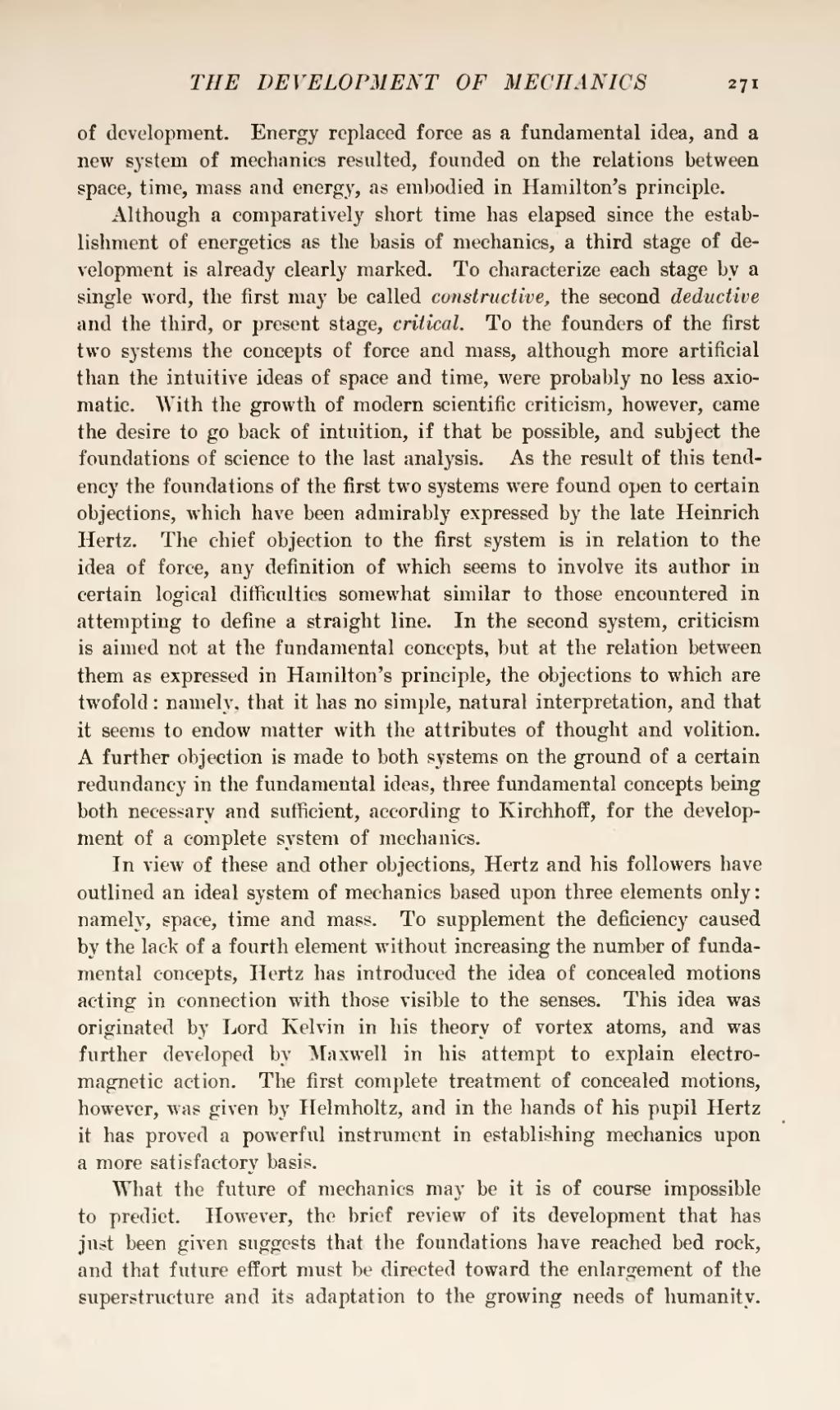of development. Energy replaced force as a fundamental idea, and a new system of mechanics resulted, founded on the relations between space, time, mass and energy, as embodied in Hamilton's principle.
Although a comparatively short time has elapsed since the establishment of energetics as the basis of mechanics, a third stage of development is already clearly marked. To characterize each stage by a single word, the first may be called constructive, the second deductive and the third, or present stage, critical. To the founders of the first two systems the concepts of force and mass, although more artificial than the intuitive ideas of space and time, were probably no less axiomatic. With the growth of modern scientific criticism, however, came the desire to go back of intuition, if that be possible, and subject the foundations of science to the last analysis. As the result of this tendency the foundations of the first two systems were found open to certain objections, which have been admirably expressed by the late Heinrich Hertz. The chief objection to the first system is in relation to the idea of force, any definition of which seems to involve its author in certain logical difficulties somewhat similar to those encountered in attempting to define a straight line. In the second system, criticism is aimed not at the fundamental concepts, but at the relation between them as expressed in Hamilton's principle, the objections to which are twofold: namely, that it has no simple, natural interpretation, and that it seems to endow matter with the attributes of thought and volition. A further objection is made to both systems on the ground of a certain redundancy in the fundamental ideas, three fundamental concepts being both necessary and sufficient, according to Kirchhoff, for the development of a complete system of mechanics.
In view of these and other objections, Hertz and his followers have outlined an ideal system of mechanics based upon three elements only: namely, space, time and mass. To supplement the deficiency caused by the lack of a fourth element without increasing the number of fundamental concepts, Hertz has introduced the idea of concealed motions acting in connection with those visible to the senses. This idea was originated by Lord Kelvin in his theory of vortex atoms, and was further developed by Maxwell in his attempt to explain electromagnetic action. The first complete treatment of concealed motions, however, was given by Helmholtz, and in the hands of his pupil Hertz it has proved a powerful instrument in establishing mechanics upon a more satisfactory basis.
What the future of mechanics may be it is of course impossible to predict. However, the brief review of its development that has just been given suggests that the foundations have reached bed rock, and that future effort must be directed toward the enlargement of the superstructure and its adaptation to the growing needs of humanity.
